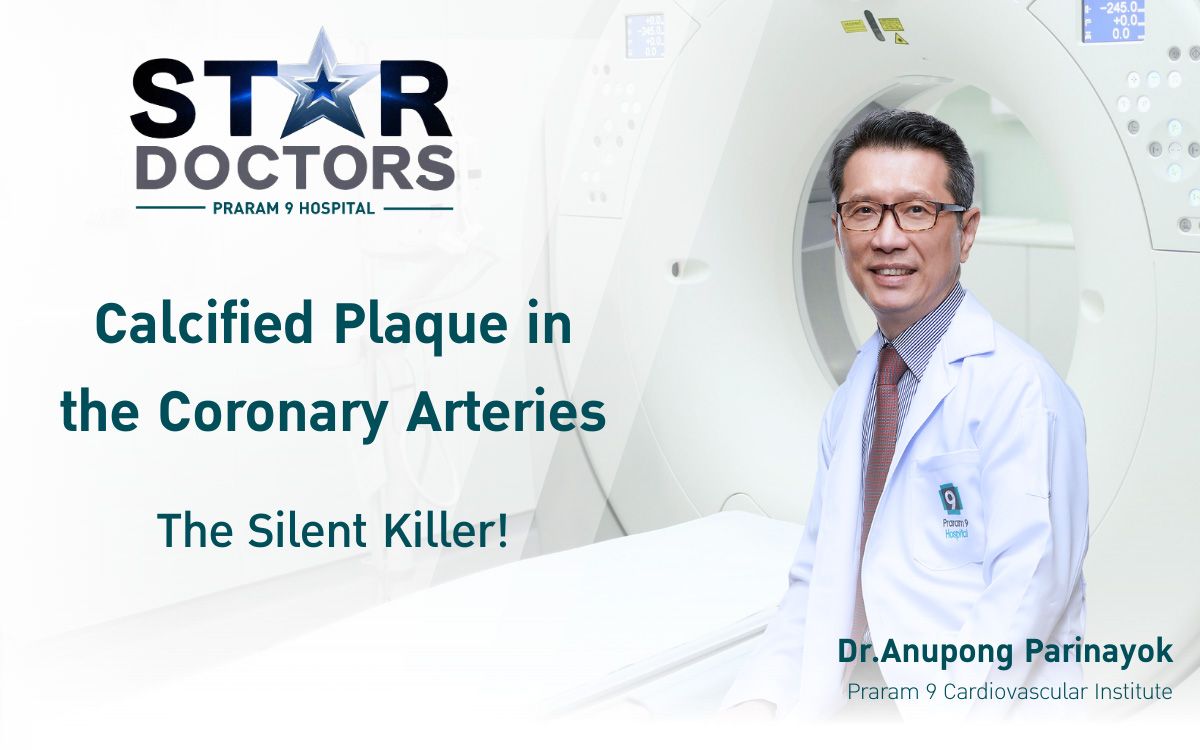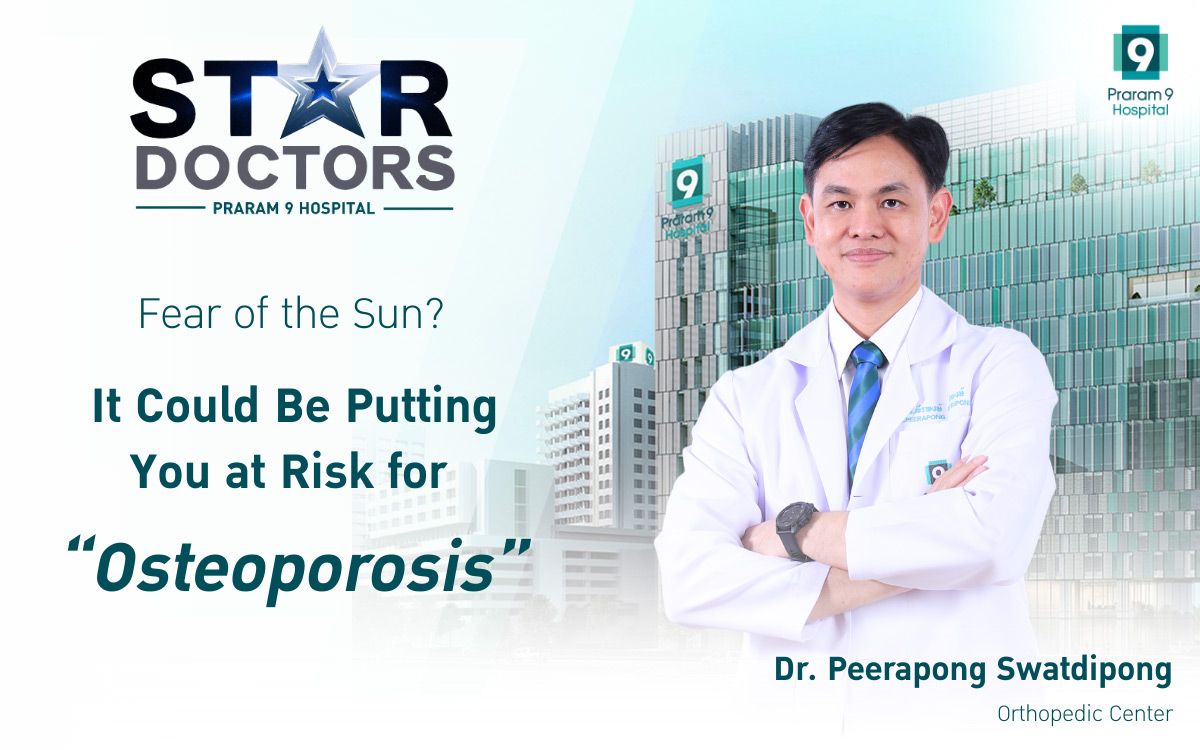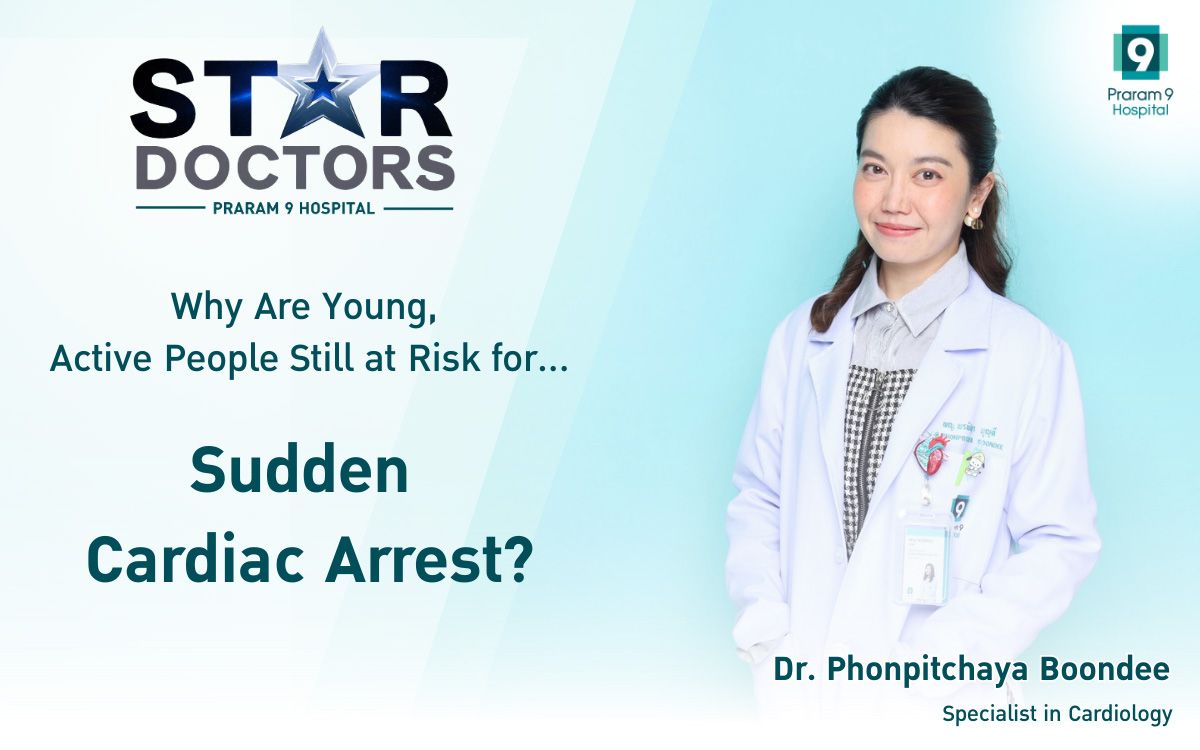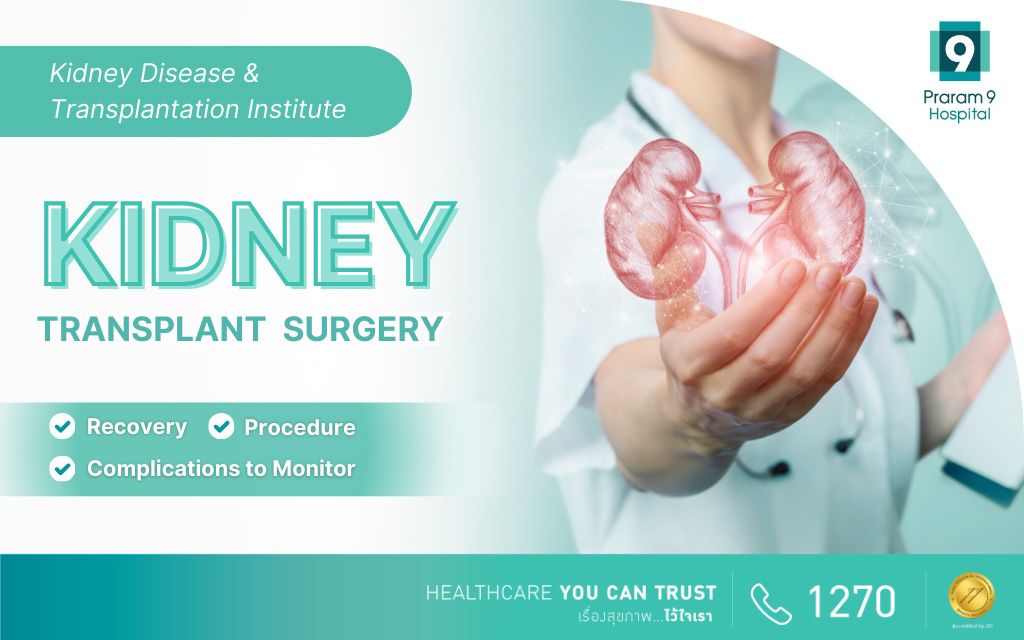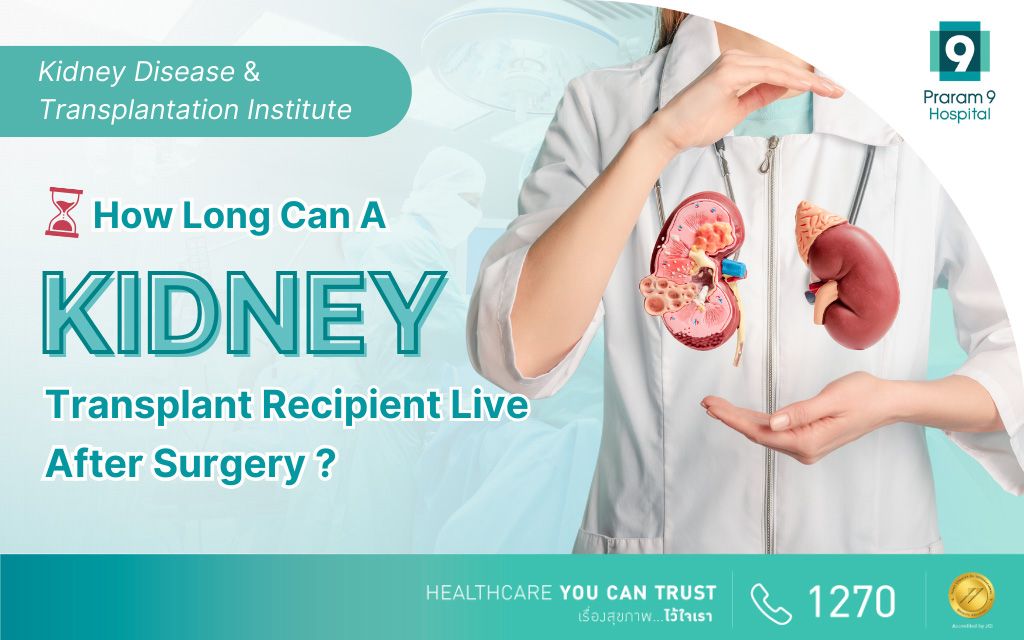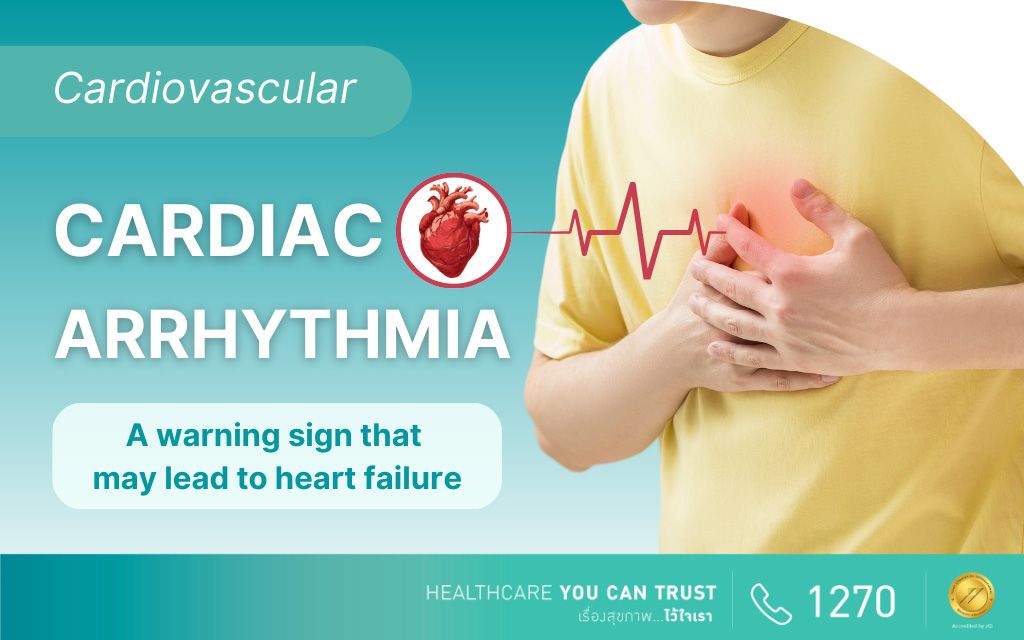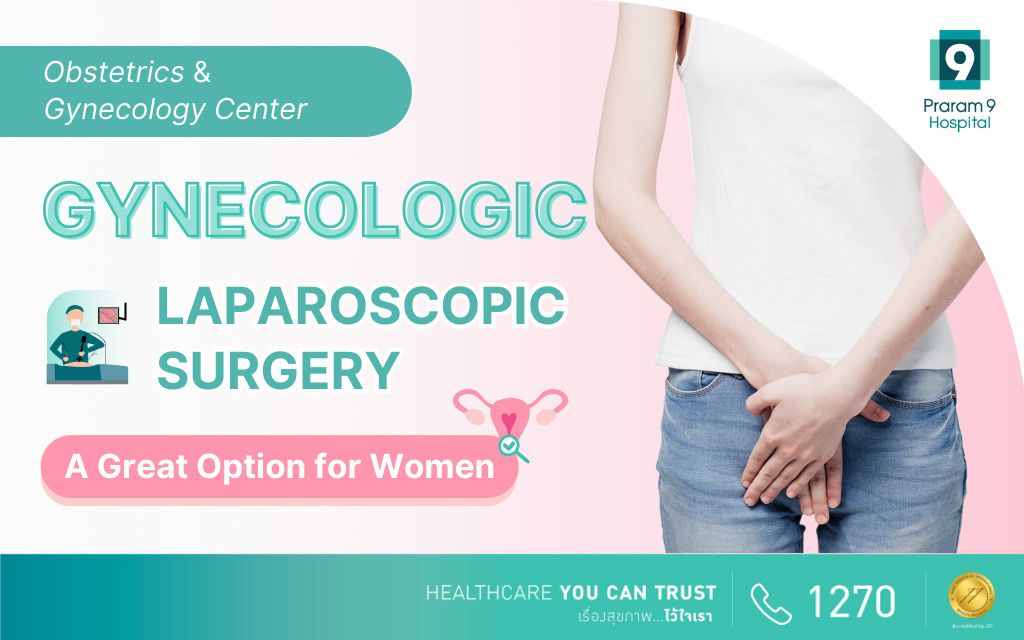Health Articles
Knowledge
Hip fractures are a major concern for the elderly.
PRUK CHAIYAKIT,M.D.
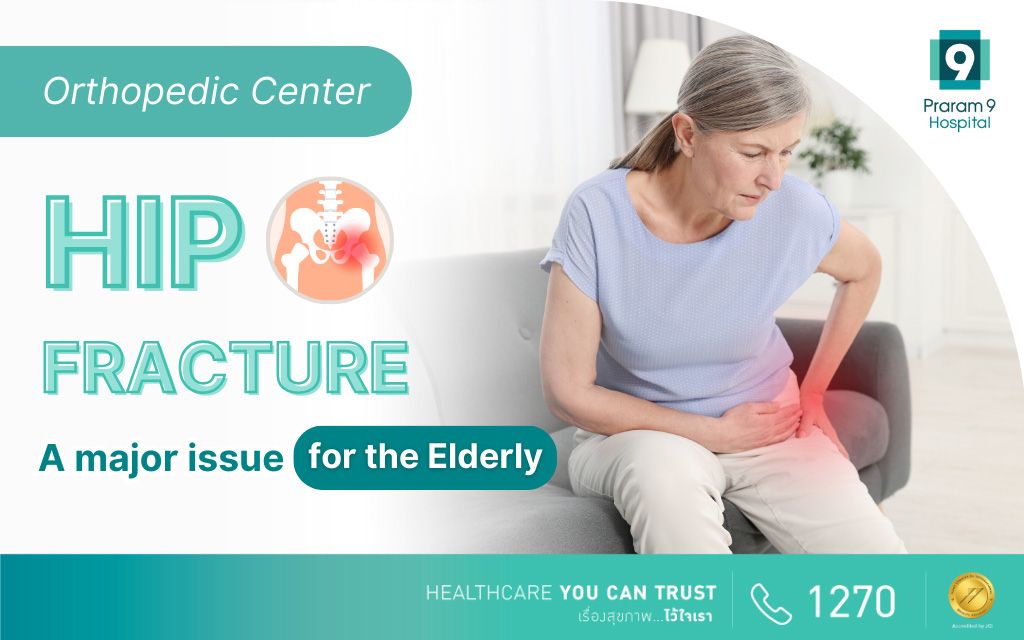
Thailand is currently embracing a fully integrated elderly society, leading to an increased health issues among the elderly. One common problem is falls, with the Department of Injury Prevention finding that one out of three elderly people falls every year. Tens of thousands of elderly individuals who fall sustain leg and hip injuries requiring hospital treatment. Furthermore, 20% of the elderly who suffer hip injuries have a chance of passing away within a year. Therefore, hip fractures from falling for the elderly is a common, close-to-home danger that may cause disability and mortality.
Table of contents
- Symptoms of Hip Fracture
- Who is at Risk of Hip Fracture?
- Complications of Hip Fractures
- Specialized Testing to Confirm Hip Fracture
- Treatment of Hip Fractures
- Prevention of Hip Fractures
- Conclusion
Symptoms of Hip Fracture
When a hip fracture occurs, it may be noticed by the following symptoms:
- Severe pain in the hip or groin area where the fracture is located
- Swelling, bruising, and tenderness may be present and pain can radiate to the knee on the same side
- Inability to stand, walk, or bear weight on the affected hip
- The leg on the side with the hip fracture may appear shorter
- The foot on the affected side may turn outward from the body
Who is at Risk of Hip Fracture?
The group at highest risk for hip fractures includes elderly individuals with osteoporosis. As people age, their bones gradually become weaker, even if they were once strong. This weakening is noticeable as seniors may develop a stooped posture or become shorter due to compression fractures in the spine caused by osteoporosis. Additionally, osteoporosis in the hip bones can lead to fragile bones, making fractures more likely even with minor falls or impacts. Therefore, elderly individuals are at risk due to weakened bones and joints, even without a specific accident.
Furthermore, seniors undergo other bodily changes that increase the risk of falls, such as changes in vision (like nearsightedness or cataracts), reduced peripheral vision in darkness or night, and difficulty seeing. These changes may lead to stumbles or falls when walking or moving objects. Additionally, there may be a reduction in muscle mass due to disuse, along with decreased nerve signals that contribute to poor balance and increased risk of falls
Complications of Hip Fracture
The severity of a hip fracture depends on the location of the fracture, which can lead to different complications. For instance, a fracture that results in a disruption of blood vessels supplying the femoral head can cause avascular necrosis, where the bone tissue in the affected area dies due to lack of blood supply. This is a common complication. Additionally, other possible complications include:
- Nonunion or delayed union of the fractured bone
- Pneumonia
- Muscle weakness
- Pressure sores (bed sores) from prolonged immobility
- Infection at the fracture site
- Hip joint dislocation
- Osteoarthritis
- Deep vein thrombosis in the leg veins, which, if a blood clot breaks loose, can flow to the heart and cause a blockage in the lungs, potentially fatal
The occurrence of deep vein thrombosis in the leg veins can happen in patients who are currently receiving treatment or after surgery, which restricts movement, impeding blood circulation. This critical factor can lead to the formation of blood clots.
Specialized Testing to Confirm Hip Fracture
Elderly individuals showing symptoms of a hip fracture may require additional testing for accurate diagnosis or post-treatment evaluation and planning. Specialized testing includes:
- X-ray of the suspected fractured bone
- Computed tomography (CT scan)
- Magnetic resonance imaging (MRI)
- Bone scan
Treatment of Hip Fracture
The primary approach to treating a hip fracture is surgery, ideally performed within the first 24 hours after the fracture to reduce hospital stay, minimize pain medication use, and decrease other potential complications. Typically, there are two main surgical treatments:
Closed or Open Reduction with Internal Fixation
In this procedure, the surgeon aligns the fractured bones and uses screws or metal plates to hold them together.
Hip Replacement
This involves replacing part or all of the hip joint, especially in cases where the fracture is severe or involves the hip joint itself. There are two types of hip replacement:
- Partial Hip Replacement (Hemiarthroplasty): Only the femoral head (the ball part of the hip joint) is replaced.
- Total Hip Replacement (Arthroplasty): Both the femoral head and the socket of the hip joint are replaced with artificial components.
After surgery, early mobilization and getting out of bed are crucial to reduce complications that can arise from prolonged bed rest and immobility. Studies also indicate that early physical therapy should be initiated to promote faster recovery, allowing patients to regain mobility and resume normal activities.
Preventing Hip Fractures
Before it’s too late, it’s advisable for elderly individuals to prepare for physical changes by:
- Managing Osteoporosis: Regularly monitor and treat osteoporosis, especially in post-menopausal women who experience rapid bone loss.
- Eye Health Checks: Regular eye exams and maintaining eye health annually are crucial.
- Calcium and Vitamin D: Promote calcium absorption for bone strength through diet or supplements.
- Home Environment: Adapt living spaces to fit elderly lifestyles to reduce fall risks.
- Lighting and Obstacles: Ensure sufficient lighting to avoid tripping hazards.
- Exercise: Tailor exercise to enhance muscle and joint flexibility and improve balance.
Conclusion
Hip fractures from accidents are common and pose a significant risk to life. What might seem like a minor fall can lead to serious consequences if a hip fracture occurs and is not promptly treated. Patients are at high risk for various complications following the accident. Therefore, if symptoms similar to a hip fracture are present, it’s crucial to consult a specialized physician promptly for further diagnosis and timely treatment. This approach reduces the likelihood of additional complications and ensures a better quality of life.

